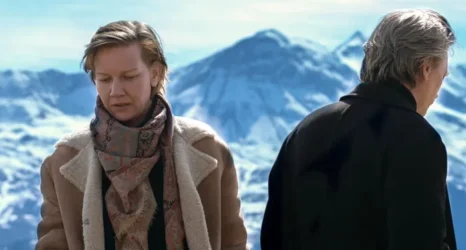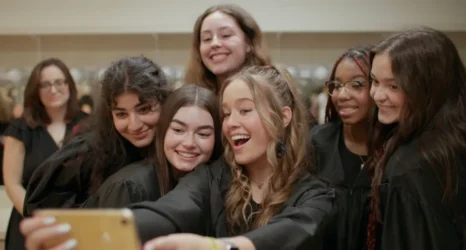In 2012, women made up a larger share of moviegoers than men, and yet there’s a general consensus in Hollywood that women-focused films—which attract women to movie theaters—are bad for business. In fact, the myth is so pervasive that former Warner Bros. president Jeff Robinov once declared that his company would stop making films with women leads altogether.
But there’s proof that films featuring strong women characters are better for production companies’ bottom lines.
FiveThirtyEight.com published a report last week showing that films that pass the Bechdel Test—a standard that requires films to have at least two women characters who have a conversation on a topic other than men—actually have a better return on investment than films that don’t pass the test.
From the report:
Using Bechdel Test data, we analyzed 1,615 films released from 1990 to 2013 to examine the relationship between the prominence of women in a film and that film’s budget and gross profits. … The total median gross return on investment for a film that passed the Bechdel Test was $2.68 for each dollar spent. The total median gross return on investment for films that failed was only $2.45 for each dollar spent.
Of movies made between 1990 and 2013, the FiveThirtyEight.com study found that about 53 percent of films passed the Bechdel Test. Given the return on investment for women-led films, it’s safe to assume that if more women-centric movies were made, studios might see better profits.
But, as West coast editor of Vanity Fair, Krista Smith, explained to FiveThirtyEight.com, “Movies that are female-driven do not travel.” That means that because filmmakers have to sell international distribution rights to their films before they can even be made, and there’s a wrong belief that international markets don’t pick up women-led films, many Bechdel-worthy movies don’t get produced.
However, FiveThirtyEight.com’s research showed that international viewers do watch women-led movies: Films that passed the Bechdel Test earned roughly the same amount overseas per dollar spent than movies that didn’t pass.
Some Swedish movie theaters have begun to use the Bechdel Test to gauge which films belong on their screens; films that pass earn an A rating.
“The entire Lord of the Rings trilogy, all Star Wars movies, The Social Network, Pulp Fiction and all but one of the Harry Potter movies fail this test,” Ellen Tejle, director of Bio Rio, an art-house cinema in Stockholm, told The Guardian last year. “For some people [the rating system] has been an eye-opener.”
While we salute the Swedish cinemas’ approach, it’s worth noting that the Bechdel Test is not the end-all-be-all of feminist films. As Kiva Reardon, founding editor of the Canadian feminist film journal cléo, points out:
If you look at quality, Ridley Scott’s The Counselor passes [the Bechdel Test] and it also has a scene with Cameron Diaz screwing a car. It’s a ludicrous representation of women, but two women discuss something other than a man, it happens to be an engagement ring, but that still counts. Evil Dead also passes, Thor passes, Thor II passes. So when you look at films that actually pass, it becomes more interesting than what doesn’t, because those films aren’t necessarily overtly feminist. The test demonstrates a kind of baseline that we are missing [in screenwriting], but labeling a film feminist because a certain interaction between two female characters happens is a bit of a stretch.
The Bechdel Test is a great tool for opening up conversations about women in film—particularly with those who might not otherwise even consider the topic—but to see more truly feminist films on screen, we must push for more women directors, screenwriters and decision makers in Hollywood.
Subscribe today to read more on this topic in the summer 2014 issue of Ms.
Still from the film Thelma and Louise courtesy of Flickr user EyesOnFire89 licensed under Creative Commons 2.0





